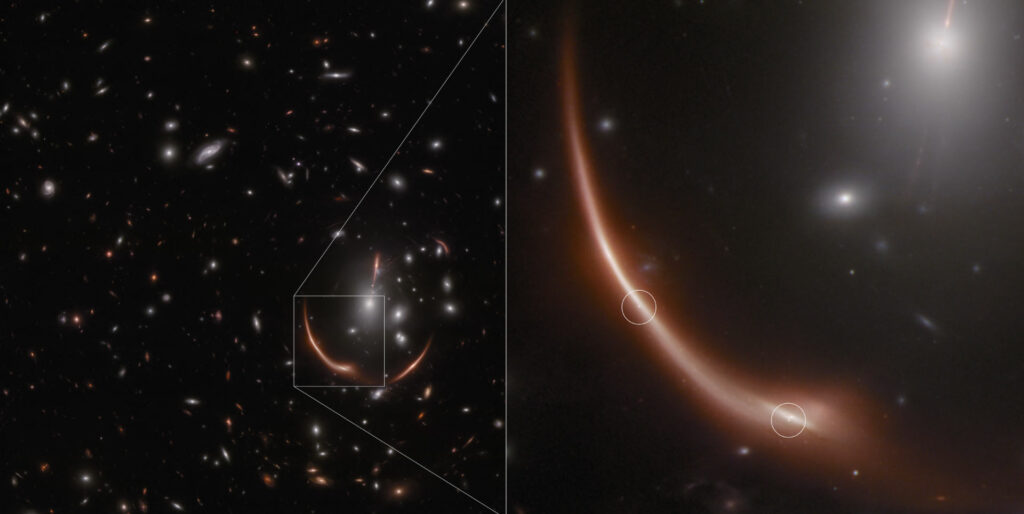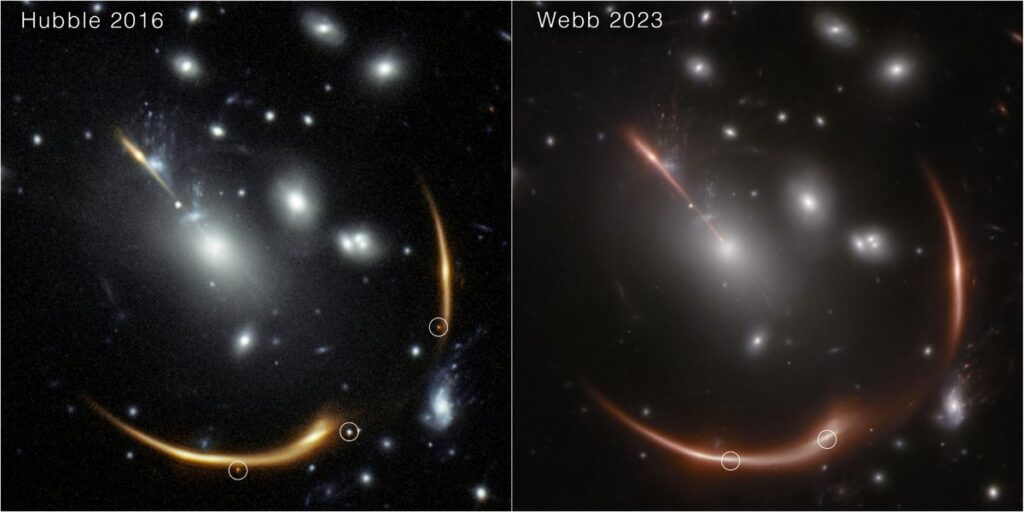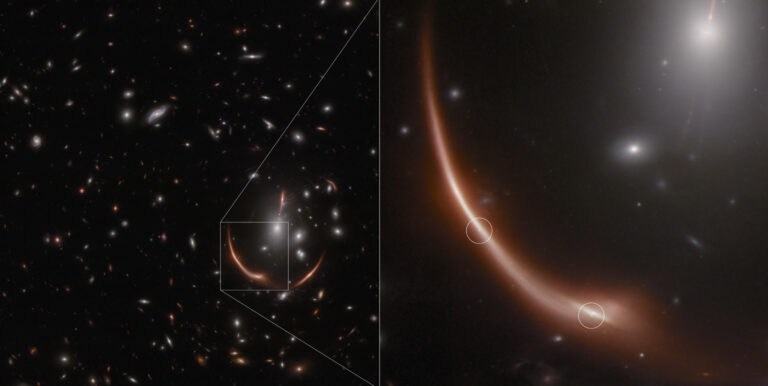The James Webb Space Telescope spots a Distorted Supernova, Potentially Resolving a Longstanding Argument.
The sole issue is that we’ll need to wait until 2035 to obtain the conclusive lensed images and find our answer.
Two distant supernovas, one residing billions of light-years away, within a galaxy observed by the Hubble and James Webb space telescopes, offer critical insights into determining the universe’s expansion rate. This measurement has sparked considerable debate in the scientific community.

The galaxy, MRG-M0138, and its accompanying supernovas were captured by the Hubble and James Webb space telescopes. Gravitational lensing, a phenomenon involving mass warping space into a lens-like shape, magnifies and distorts distant galaxies, making them visible. MRG-M0138, imaged by Hubble in 2016 and analyzed three years later, appears as five distorted images due to the lensing effect of the galaxy cluster MACS J0138.0-2155, situated 4 billion light-years away. These images, warped into arcs, differ from familiar galaxy views due to the lensing distortion.
In 2019, while examining Hubble images, astronomers identified a type Ia supernova, “Requiem,” within MRG-M0138. These supernovas, resulting from the explosion of a white dwarf, serve as crucial celestial markers.
Recently, the James Webb Space Telescope detected a second type Ia supernova, “Encore,” within MRG-M0138, making it the most distant galaxy observed with two such supernovas. This discovery holds immense significance in addressing a pressing cosmological enigma—the discrepancy in the Hubble constant’s values obtained through different methods.
The discordance in measuring the Hubble constant implies a potential error in our observations or the involvement of novel physics. One approach involves analyzing cosmic microwave background (CMB) radiation, residual from the Big Bang. These temperature variations correspond to ancient matter densities that evolved into galaxies and clusters. According to the standard cosmological model, this connection yields a Hubble constant of 67.4 kilometers (41.9 miles) per second per megaparsec, representing the expansion rate of space within a specific volume over time.

However, Type Ia supernovas play a crucial role in measuring cosmic distances, including the Hubble constant. Their standardized maximum luminosity enables the assessment of their true brightness. By comparing their observed brightness with their intrinsic luminosity, astronomers gauge their distances. This process involves matching these distances with the supernova’s redshift, indicating the universe’s expansion rate and the stretching of light wavelengths. This comparison utilizes the Hubble-Lemaître law, equating recession velocity to distance multiplied by the Hubble constant. Using this method, astronomers arrive at a value of 73.2 kilometers (45.5 miles) per second per megaparsec, surpassing the CMB-derived figure.
The lensed supernovas within MRG-M0138 offer a unique advantage as they manifest in five distinct images due to gravitational lensing.
“When a supernova erupts behind a gravitational lens, its light takes multiple routes to reach Earth,” explained Justin Pierel of the Space Telescope Science Institute and Andrew Newman of the Observatories of the Carnegie Institution for Science in a joint statement.
These varying paths result in the supernova appearing in the images at different intervals—spanning days, weeks, or even years.
“By assessing the time disparities between these supernova images, we can map the evolution of the universe’s expansion rate, known as the Hubble constant—a significant challenge in modern cosmology,” Pierel and Newman elaborated.
Despite the rarity of lensed supernovas, the presence of two type Ia supernovas within MRG-M0138 elevates their significance. Yet, a complication arises: while most images of these supernovas have surfaced, one light path, due to the distribution of dark matter in the lensing cluster, is anticipated to take considerably longer. These final images aren’t projected to emerge until the mid-to-late 2030s.
“Typically, supernovas are unpredictable, but in this instance, we have a forecast for the last appearances of Requiem and Encore,” Pierel and Newman noted. “Around 2035, infrared observations will capture their conclusive moments, providing a precise measurement of the Hubble constant.”
While the Hubble Space Telescope might not be operational by 2035, the hope is for the James Webb Space Telescope to remain active. If it continues functioning and detects the final images of Requiem and Encore, the resulting Hubble constant measurement could resolve whether the Hubble tension is merely experimental error or a genuine cosmological phenomenon.
Do not forget to share your opinion with us to provide you with the best posts !





0 Comments